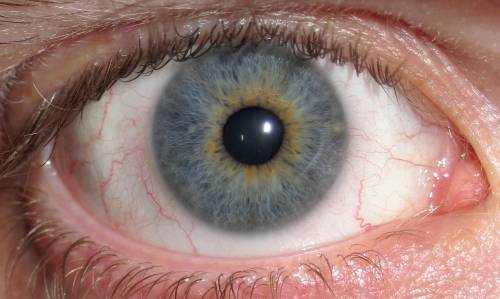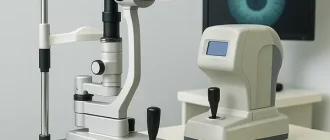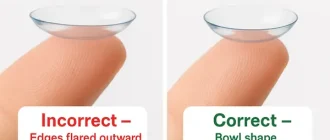Contact lenses have been a game-changer for millions of people who prefer them over glasses. They offer convenience, improved peripheral vision, and a more natural look. But are contacts bad for your eyes?
How Contact Lens Usage Impacts Eye Health Over Time
| Years of Use | Cumulative Risk (%) |
|---|---|
| 1–2 | 10% |
| 3–5 | 25% |
| 6–10 | 45% |
| 11–15 | 70% |
| 16+ | 90% |
This chart demonstrates how prolonged use of contact lenses increases cumulative risks to eye health, including infections and dryness, over time.
The Pros of Wearing Contacts
Contacts provide several benefits:
- Enhanced Vision: They conform to the curvature of your eye, offering a broader field of vision and reducing distortions compared to glasses.
- Convenience: Perfect for sports, outdoor activities, and situations where glasses might be cumbersome.
- Aesthetic Appeal: No frames obstructing your face, allowing for a more natural appearance.
The Potential Risks of Contact Lenses
Despite their advantages, contact lenses come with potential risks if not used properly:
- Infections: Improper handling, such as not washing hands before inserting lenses or storing them improperly, can introduce harmful bacteria. A common example is bacterial keratitis, often caused by wearing lenses overnight. This painful infection can result in redness, discharge, and even permanent vision loss if untreated. According to the CDC, approximately 1 in 500 contact lens users develop microbial keratitis annually, making hygiene a top priority.
- Dry Eyes: Contacts can limit the amount of oxygen reaching your cornea, leading to a condition known as contact lens-induced dry eye. This often occurs when lenses are worn for extended periods without adequate lubrication or breaks. Surveys suggest that around 50% of contact lens wearers report experiencing dryness as a recurring issue.
- Corneal Damage: Sleeping in contacts or wearing them beyond the recommended duration can cause micro-abrasions or even corneal ulcers. For example, a scratched cornea may make your eye more susceptible to infections and healing complications. Data shows that individuals who sleep in their lenses are six to eight times more likely to develop corneal infections.
- Allergic Reactions: Some users experience irritation due to lens material or cleaning solutions. This can range from mild discomfort to a condition called giant papillary conjunctivitis, where the inner eyelid becomes inflamed due to protein buildup on lenses. Studies reveal that about 20% of contact lens wearers develop mild to severe allergic reactions at some point.
Prevalence of Dry Eyes Among Contact Lens Wearers
| Lens Type | Percentage of Wearers (%) |
|---|---|
| Daily Disposable Lenses | 20% |
| Bi-Weekly Lenses | 35% |
| Monthly Lenses | 50% |
| Extended Wear Lenses | 70% |
This chart highlights the prevalence of dry eyes among wearers of different contact lens types, showing a significant increase with extended wear lenses.
U.S. Statistics on Contact Lens Usage
- Around 45 million Americans wear contact lenses.
- Nearly 1 in 5 users report experiencing eye infections or discomfort due to improper usage.
- Approximately 33% of contact lens wearers admit to sleeping in their lenses occasionally, despite recommendations against it.
- The most common age group for contact lens wearers is 25–34.
Contact Lens Users by Age Group
| Age Group | Percentage of Users (%) |
|---|---|
| 18–24 | 20% |
| 25–34 | 40% |
| 35–44 | 25% |
| 45–54 | 10% |
| 55+ | 5% |
This chart showcases the distribution of contact lens users across various age groups, with the highest usage seen in the 25-34 age range.
Real-Life Cases: The Good and the Bad
- A 29-year-old male from California: Wore contacts for 10 years without issues by strictly following care guidelines. He never slept in them, replaced his lenses monthly, and avoided swimming while wearing them.
- A 21-year-old female from New York: Frequently slept in her contacts and used tap water to clean them. She developed a painful corneal ulcer, requiring months of treatment and reverting to glasses temporarily.
- A 35-year-old woman from Texas: Experienced chronic dryness and irritation after switching to a cheaper contact lens solution. She resolved the issue by returning to her original brand and incorporating rewetting drops into her routine.
Best Practices for Safe Contact Lens Use
- Follow Replacement Schedules (Rating: 10/10): Adhering to the prescribed replacement schedule is crucial for maintaining eye health and preventing complications.
- Example: A student who used daily disposable lenses avoided long-term infections and discomfort by always discarding them after a single use.
- Practice Good Hygiene (Rating: 10/10): Proper handwashing before handling lenses minimizes the risk of introducing bacteria to your eyes.
- Example: A healthcare worker ensured she never touched her lenses without thoroughly cleaning her hands, avoiding infections even in a high-risk environment.
- Avoid Water Contact (Rating: 9/10): Prevents exposure to harmful organisms like Acanthamoeba, which thrive in water.
- Example: A swimmer who mistakenly wore contacts in the pool contracted a severe corneal infection, underscoring the importance of this guideline.
- Regular Eye Check-ups (Rating: 8/10): Ensures early detection of issues like dryness, infection, or prescription changes.
- Example: An office worker’s annual check-up revealed early signs of dry eye, allowing timely intervention to prevent worsening symptoms.
- Listen to Your Eyes (Rating: 9/10): Recognizing symptoms like redness or discomfort can prevent serious complications.
- Example: A photographer who felt mild irritation removed his lenses immediately, avoiding a potential ulcer caused by prolonged wear.
Editorial Advice
- Reyus Mammadli’s Tip: “Think of contacts like a rental car. Treat them well, follow the rules, and they’ll serve you without a hitch.”
- Take breaks from contacts. Your eyes will appreciate the occasional breather.
- When in doubt, always prioritize hygiene and proper storage over convenience.





